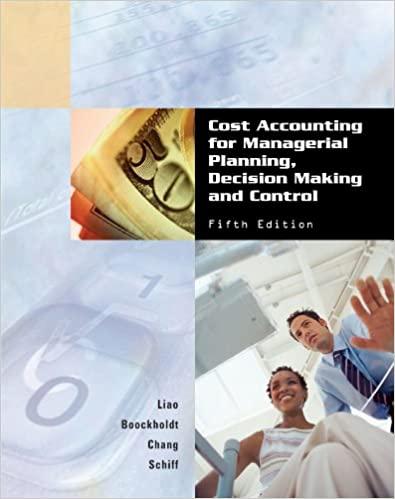Question
Cash Flow: 2014 2015 2016 2017 Period End Date 12/31/14 12/31/15 12/31/16 12/31/17 Stmt Source 10k 10k 10k 10k Currency Code Assets Cash, Equiv and
| Cash Flow: | 2014 | 2015 | 2016 | 2017 | ||
| Period End Date | 12/31/14 | 12/31/15 | 12/31/16 | 12/31/17 | ||
| Stmt Source | 10k | 10k | 10k | 10k | ||
| Currency Code | ||||||
| Assets | ||||||
| Cash, Equiv and Short-Term Investments | 17,416.0 | 19,808.0 | 25,981.0 | 30,986.0 | ||
| Receivables | 5,612.0 | 5,654.0 | 8,339.0 | 13,164.0 | ||
| Inventories | 8,299.0 | 10,243.0 | 11,461.0 | 16,047.0 | ||
| Deferred Current Assets | ||||||
| Deferred Taxes,Current Assets | ||||||
| Other Current Assets | ||||||
| Total Current Assets | 31,327.0 | 35,705.0 | 45,781.0 | 60,197.0 | ||
| Net Property, Plant, and Equipment | 16,967.0 | 21,838.0 | 29,114.0 | 48,866.0 | ||
| Goodwill and Other Intangible Assets | 4,083.0 | 4,751.0 | 4,638.0 | 16,721.0 | ||
| Investment and Advances | ||||||
| Other Non-Current Assets | 2,128.0 | 2,453.0 | 3,869.0 | 5,526.0 | ||
| Total Non-Current Assets | 23,178.0 | 29,042.0 | 37,621.0 | 71,113.0 | ||
| Total Assets
| 54,505.0 | 64,747.0 | 83,402.0 |
| ||
| Liabilities and Shareholders' Equity | ||||||
| Payables | 16,459.0 | 20,397.0 | 25,309.0 | 34,616.0 | ||
| Accrued Expenses,Current | 9,807.0 | 10,372.0 | 13,739.0 |
| ||
| Current Debt | ||||||
| Deferred Liabilities, Current | 1,823 | 3,118 | 4,768 | 5,097 | ||
| Other Current Liabilities | ||||||
| Total Current Liabilities
| 28,089.0 | 33,887.0 | 43,816.0 | 57,883.0 | ||
| LT Debt and Capital Lease Obligation | 12,489.0 | 14,175.0 | 15,213.0 | 37,926.0 | ||
| Deferred Liabilities, Non current
| 1,531.0 | 1,339.0 | 1,787.0 |
| ||
| Other Non-Current Liabilities | 1,655.0 | 1,962.0 | 3,301.0 | 5,798.0 | ||
| Total Non-Current Liabilities and MI | 15,675.0 | 17,476.0 | 20,301.0 | 45,718.0 | ||
| Total Liabilities | ||||||
| Capital Stock | 5.0 | 5.0 | 5.0 | 5.0 | ||
| Retained Earnings | 1,949.0 | 2,545.0 | 4,916.0 | 8,636.0 | ||
| Accum Gains/ Losses Not Affecting RE | ||||||
| Total Equity | 10,741.0 | 13,384.0 | 19,285.0 |
| ||
| Total Liabilities and Equity | 19,006.0 | 21,611.0 | 26,979.0 |
| ||
| Ordinary Shares Outstanding
| 465.0 | 471.0 | 477.0 | 484.0 | ||
| INCOME STATEMENT: | ||||||
| Total Revenue | 88,988.0 | 107,006.0 | 135,987.0 |
| ||
| Cost of Revenue | 73,518.0 | 85,061.0 | 105,884.0 |
| ||
| Gross Profit | 15,470.0 | 21,945.0 | 30,103.0 | 40,683.0 | ||
| Selling,General and Administrative | 5,884.0 | 7,001.0 | 9,665.0 |
| ||
| Research and Development | 9,275.0 | 12,540.0 | 16,085.0 |
| ||
| Special Income Statements | ||||||
| Operating Expenses | 15,292.0 | 19,712.0 | 25,917.0 |
| ||
| Operating Income | 178.0 | 2,233.0 | 4,186.0 | 4,106.0 | ||
| Net Interest Income | -171.0 | -409.0 | -384.0 |
| ||
| Other Income/ Expense Net | -118.0 | -256.0 | 90.0 |
| ||
| Pre-Tax Income | -111.0 | 1,568.0 | 3,892.0 |
| ||
| Provision for Income Tax | 167 | 950 | 1,425 | 769 | ||
| Net Income | -241 | 596 | 2,371 | 3,033 |
| Basic EPS | -.52 | 1.28 | 5.01 | 6.32 |
| Diluted EPS | -.52 | 1.25 | 4.90 | 6.15 |
BALANCE SHEET:
Values in Millions (Except for per share items)
2014
2015
2016
2017
Period End Date
12/31/2014
12/31/2015
12/31/2016
12/31/2017
Stmt Source
10-K
10-K
10-K
10-K
Stmt Source Date
2/10/2017
2/2/2018
2/2/2018
2/2/2018
Stmt Update Type
-
-
-
-
Currency Code
Assets
Cash, Equiv and Short Term Investments
17,416.0
19,808.0
25,981.0
30,986.0
Receivables
5,612.0
5,654.0
8,339.0
13,164.0
Inventories
8,299.0
10,243.0
11,461.0
16,047.0
Deferred Current Assets
-
-
-
-
Deferred Taxes,Current Assets
-
-
-
-
Other Current Assets
-
-
-
-
Total Current Assets
31,327.0
35,705.0
45,781.0
60,197.0
Net Property,Plant,and Equipment
16,967.0
21,838.0
29,114.0
48,866.0
Goodwill and Other Intangible Assets
4,083.0
4,751.0
4,638.0
16,721.0
Investments and Advances
-
-
-
-
Other Non-Current Assets
2,128.0
2,453.0
3,869.0
5,526.0
Total Non-Current Assets
23,178.0
29,042.0
37,621.0
71,113.0
Total Assets
54,505.0
64,747.0
83,402.0
131,310.0
Liabilities and Shareholders' Equity
Payables
16,459.0
20,397.0
25,309.0
34,616.0
Accrued Expenses,Current
9,807.0
10,372.0
13,739.0
18,170.0
Current Debt
-
-
-
-
Deferred Liabilities,Current
1,823.0
3,118.0
4,768.0
5,097.0
Other Current Liabilities
-
-
-
-
Total Current Liabilities
28,089.0
33,887.0
43,816.0
57,883.0
LT Debt and Capital Lease Obligation
12,489.0
14,175.0
15,213.0
37,926.0
Deferred Liabilities, Non current
1,531.0
1,339.0
1,787.0
1,994.0
Other Non-Current Liabilities
1,655.0
1,962.0
3,301.0
5,798.0
Total Non-Current Liabilities and MI
15,675.0
17,476.0
20,301.0
45,718.0
Total Liabilities
-
-
-
-
Capital Stock
5.0
5.0
5.0
5.0
Retained Earnings
1,949.0
2,545.0
4,916.0
8,636.0
Accum Gains/ Losses Not Affecting RE
-
-
-
-
Total Equity
10,741.0
13,384.0
19,285.0
27,709.0
Total Liabilities and Equity
19,006.0
21,611.0
26,979.0
52,452.0
Ordinary Shares Outstanding
465.0
471.0
477.0
484.0
Please if you could answer questions 1,3,4,5,6 (Not 2)

Step by Step Solution
There are 3 Steps involved in it
Step: 1

Get Instant Access to Expert-Tailored Solutions
See step-by-step solutions with expert insights and AI powered tools for academic success
Step: 2

Step: 3

Ace Your Homework with AI
Get the answers you need in no time with our AI-driven, step-by-step assistance
Get Started


